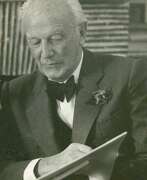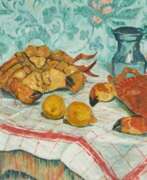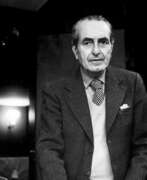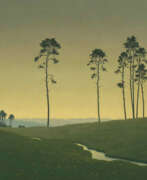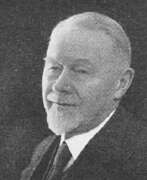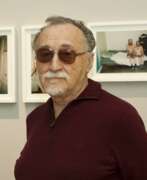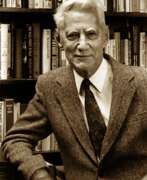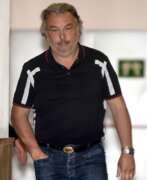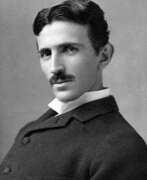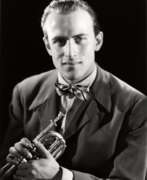Engineers 20th century
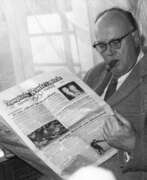

Franz Bronstert was a German engineer and painter. Before World War I Bronstert visited and finished the superior school for engineers in Hagen. He served during the war in the rank of Lieutenant and later „Rittmeister" equivalent to Captain. As a prisoner of war at Ripon, Yorkshire he got into contact with artists Fritz Fuhrken and Georg Philipp Wörlen and started with his own artistic work. These contacts led to the foundation of the group of artists „Der Fels" (The Rock). Past the war he settled in Hagen and made contact with the group around collector Karl Ernst Osthaus especially with Christian Rohlfs. The latter influenced the work of Bronstert considerably. Membership in „Der Fels" led to numerous exhibitions all over Germany and Austria between 1921 and 1927. Bronstert’s art developed from radical expressionism of the early twenties to a realistic phase and finally to a reformed impressionism as the artist claims himself. Bronstert finds his motifs mostly in nature. Even though Bronstert mastered several techniques, like oil painting, drawing, woodcut it was the watercolour painting that he loved most. Bronstert was both a technical and artistic talent. He was successful in his job and was a member of the board of VARTA with several international patents on his record when he retired. Past retirement he concentrated solely on his art again. Works by Bronstert can be found in the Schneider Collection, Museum Baden, Solingen; in the collections of Karl Ernst Osthaus-Museum in Hagen; in the Museum Schloss Moyland, in the Von der Heydt-Museum, Wuppertal, in the Bavarian State Painting Collections, Munich,and in the art museums of Soest, Germany, Iserlohn, and Lüdenscheid as well as in private collections.
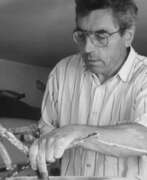

Guido Deleu is a Belgian sculptor, creative visual artist and civil engineer whose career began at the Roeselare Art Academy. Deleu's creations in ceramics and bronze are characterised by a modern, sophisticated and balanced character. His most iconic creation is the sculpture The Visitor.
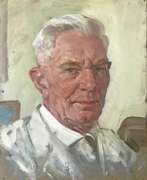

Fritz Discher was a German landscape painter.
Discher first trained as a mechanical engineer and then studied painting at the Royal University of Fine Arts in Charlottenburg. In 1909, Discher became a specialist teacher at the Municipal Trade Hall in Berlin, and at the same time he continued his painting activities. From 1924 he had his own studio as a freelance portrait painter.
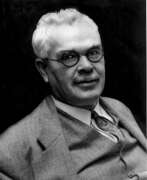

Francis Gladheim Pease was an American astronomer and optical instrument maker.
Pease graduated from the Armor Institute of Technology in Chicago, worked as an optician and observer at Yerkes Observatory, and from 1904 also made optical instruments at Mount Wilson Observatory, where he worked for 34 years. Pease designed a 100-inch telescope as well as a 50-foot interferometric telescope, with which he made direct measurements of the diameters of stars. He also participated in the development of the Hale telescope.
In 1928 he found the first planetary nebula in a globular cluster (M15), now cataloged as Pease. Francis Gladheim Pease also took very high quality photographs of the surface of the Moon, and a crater on this Earth satellite is named in his honor.
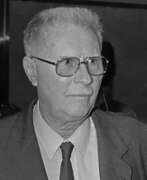

Jean Prouvé was a French metal worker, self-taught architect and designer. Le Corbusier designated Prouvé a constructeur, blending architecture and engineering. Prouvé's main achievement was transferring manufacturing technology from industry to architecture, without losing aesthetic qualities. His design skills were not limited to one discipline. During his career Jean Prouvé was involved in architectural design, industrial design, structural design and furniture design.


Paolo Salvati was an Italian expressionist painter and restorer.
After training as a surveying engineer, Salvati developed a passion for painting, particularly expressionism. He worked with pastels and tempera, did oil painting, and painted in acrylics. His works include landscape miniatures, seascapes, still lifes and portraits. Salvati's works are characterized by life-affirming, saturated colors.
Salvati also designed and restored stringed instruments.
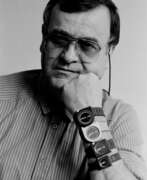

Roger Tallon was a French industrial designer.
Tallon and his team created hundreds of products, including industrial robots for Peugeot, the apparently purposeless 8mm film camera "Veronic", the Gallic 16 and 14 lathes for the Belgian company La Mondiale — a quantum leap in machine tooling —, airport vehicles, forklifts for Fenwick, graphic images for Fenwick Aviation, and a slide projector for Kodak.
In the art world, Tallon worked with Yves Klein, César Baldaccini, Arman, and was contacted by Catherine Millet, founder of the art press review, to create a brand that has hardly changed to this day.
Tallon became a household name[citation needed] in areas including tableware, furniture, interior design, reflector lamps for the German Erco, watches for Lip, ski boots for Salomon Group, toothbrushes for Fluocaril, oilcans for Elf, and so on.


